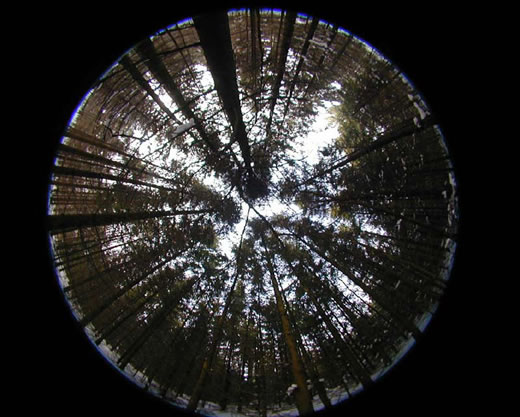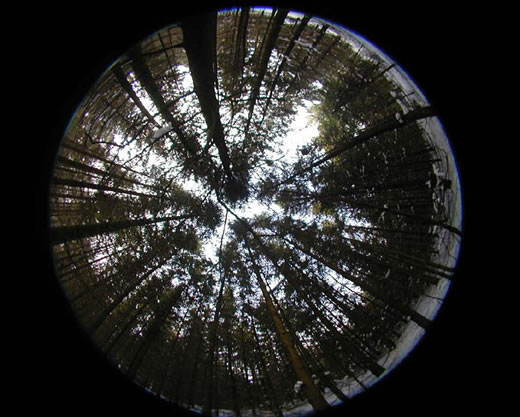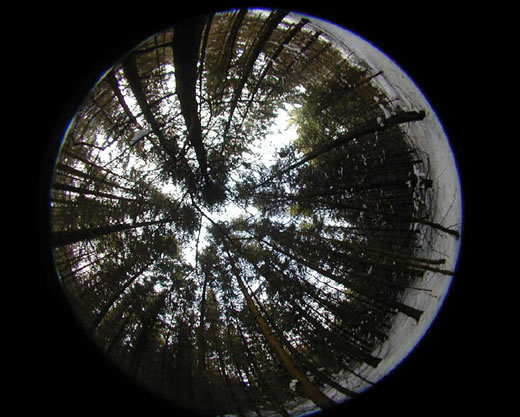 |
P H O T O G R A P H Y C O N T E S T Sponsored by A.J. Hirsch |
Diane Redekop
First Place
2005 OAPT Members Photo Contest



Sky Gap Analysis using Hemispherical Photography
The enclosed series of 3 photographs illustrate the use of hemispherical (fisheye) photography in meteorological and forestry-related studies. These photographs are examples of in situ remote sensing, and are a sample dataset from my Master’s thesis (Advisor: Dr. Ellsworth LeDrew, Department of Geography, University of Waterloo). My research examines measurement sensitivity of using hemispherical photography as a means for obtaining sky gap data and, in particular, how having the fisheye lens-mounted camera angled away from the horizontal can influence sky gap readings.
The series of 3 photographs were taken at the horizontal (photograph #1), 10º degrees from the horizontal (photograph #2) and 20º degrees from the horizontal (photograph #3), and the angles were measured using a compass (to maintain direction of the lens while adjusting the camera angle) and a construction-grade level. Adjusting a specific photographic variable, such as the camera angle at (and away from) horizontal may influence sky gap readings by introducing non-canopy factors into the photograph, including a disproportionate and unsymmetrical amount of ground surface. Angling the camera lens away from the horizontal may also influence sky gap brightness readings as the camera may be tilted towards the Sun (or a neighbouring canopy gap), which may result in the lens receiving unrepresentative radiation levels.
Analyzing measurement sensitivity of hemispherical photography will determine if different photographic variables, including camera angle, are influencing factors in sky gap-level readings.